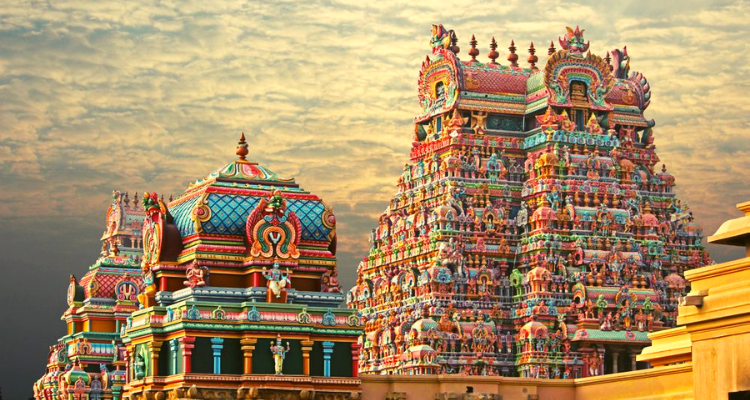
Indian temple architecture
Indian temple architecture is a rich and diverse architectural style that has evolved over thousands of years. It reflects the cultural, religious, and artistic traditions of India. Indian temples are known for their intricate and ornate designs, and they serve as places of worship for various religions, including Hinduism, Jainism, and Buddhism. Here are some key features and elements of Indian temple architecture:
Temple Layout: Indian temples typically have a prescribed layout that includes a sanctum (garbhagriha or inner sanctum), a tower (shikhara or vimana) above the sanctum, an entrance porch (mandapa), and a pathway for circumambulation (pradakshina patha). The layout can vary in complexity and size.
Sculptures and Carvings: Indian temples are adorned with intricate sculptures and carvings, depicting gods, goddesses, mythological stories, celestial beings, and various motifs. These sculptures are often finely detailed and cover both the inner and outer walls of the temple.
Temple Towers: The shikhara or vimana is a prominent feature of Indian temples. It is a towering structure that rises above the sanctum. The design and shape of the vimana can vary by region and architectural style.
Mandapas: The mandapa is the entrance hall or porch of the temple. It serves as a gathering space for devotees and often features elaborately carved pillars and ceilings.
Gopurams: In South Indian temple architecture, gopurams are monumental gateways that lead into the temple complex. These gateways are often highly decorated with colorful sculptures and reliefs.
Materials: Indian temples are traditionally constructed using stone, particularly granite and sandstone. Wood was also used in some temple constructions, but most ancient wooden temples have not survived.
Symbolism: Every aspect of temple architecture is rich in symbolism. The layout, the placement of deities, the direction of entrances, and the design of sculptures all have specific symbolic meanings related to the spiritual and cosmological beliefs of the religion.
Regional Variations: India's vast and diverse geographical and cultural landscape has resulted in a wide variety of temple architectural styles, including Nagara style in the north, Dravidian style in the south, and various regional styles in different parts of the country.
Renovation and Preservation: Many ancient temples in India have undergone renovation and restoration over the centuries to preserve their heritage. Organizations and government bodies work to protect and maintain these historic sites.
Indian temple architecture is a testament to the artistic and engineering skills of ancient builders and reflects the deep spiritual and cultural roots of the country. Each temple tells a story of devotion, artistry, and the enduring legacy of India's religious traditions.